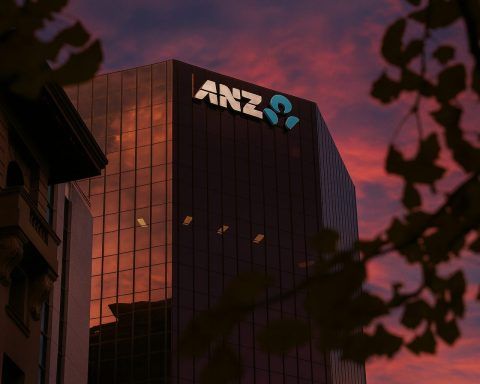- All-Time High & Pullback: Bitcoin surged to a fresh all-time high of around $126,200 early this week, extending a strong rally, before dropping ~2–3% to the low $121,000s by Oct. 8 amid profit-taking [1] [2]. The flagship cryptocurrency is still up roughly 10% in October and nearly 95% year-on-year, despite the abrupt mid-week dip [3] [4].
- Market Reaction & Volume: The brief pullback erased the gains of the prior two days and dragged down major altcoins – Ethereum (ETH), XRP, Solana (SOL), and Cardano (ADA) each fell ~5–7% alongside Bitcoin’s slide [5]. Crypto trading activity remains brisk; total market capitalization hovers around $4.3 trillion with daily trading volumes near $198 billion, reflecting high investor engagement [6].
- Macro Safe Havens Diverge: A strengthening U.S. dollar index (DXY) – now at a 2-month high – and surging gold prices created cross-currents. Gold rocketed past $4,000/oz for the first time in history this week, even as Bitcoin failed to breach the stiff $126K resistance and recoiled by ~2% [7] [8]. A strong dollar typically weighs on BTC, and Tuesday’s risk-off mood saw investors flock to gold as a haven amid global economic jitters [9] [10].
- Political & Regulatory News:U.S. political gridlock played into market sentiment – an ongoing federal government shutdown has paused key economic data releases, leaving traders without fresh indicators [11]. Still, regulatory signals have been broadly positive: Friendly crypto regulations under President Trump helped fuel Bitcoin’s mid-August rally to ~$124.5K [12]. This week, Senator Cynthia Lummis hinted the U.S. could start funding a “Strategic Bitcoin Reserve”, crediting President Trump’s support even as legislation is pending [13]. And in a nod to pro-crypto policy, President Trump nominated Travis Hill – an official who encouraged banks to engage with digital assets – as permanent head of the FDIC on Oct. 7 [14] [15].
- Institutional Inflows & Demand: The rally has been underpinned by record institutional inflows. Over the past week, Bitcoin investment vehicles accumulated ~63,000 BTC (>$7 billion) – the strongest wave of buying this year [16]. U.S.-listed spot Bitcoin ETFs have added more than $60 billion in assets since launching in early 2024, including a $3.2 billion surge last week alone [17]. Exchange balances of BTC have sunk to a 6-year low (2.83 million BTC), as 170,000 coins left exchanges in the past month [18] – a sign of long-term holders locking up supply.
- Analyst Sentiment – Bullish Forecasts: Despite volatility, many experts remain bullish. Economist Timothy Peterson calculates a 50% probability that Bitcoin ends October above $140,000 (versus 43% odds it stays below $136K) based on decade-long simulations [19] [20]. Charles Edwards, founder of Capriole Investments, said a breakout past $120K could lead to a “very quick” run to $150,000, potentially “in the next days” [21] [22]. Similarly, Standard Chartered’s Geoffrey Kendrick sees BTC climbing to $135,000 soon – and even floated a scenario of $200K by year-end if favorable trends continue [23].
- Cautionary Flags – Overheating Risk: Some analysts urge caution that the market may be overheated after the rapid run-up. Vetle Lunde of K33 noted last week’s massive long positioning “often coincided with local tops,” warning of a likely short-term consolidation ahead [24] [25]. Bitcoin’s chart shows support around $118,000 if a deeper pullback occurs [26], with on-chain data indicating a cluster of buyer interest near $117K (where ~190K BTC were last acquired) [27]. Nick Ruck of LVRG Research cautioned that while strong fundamentals have propelled Bitcoin to new highs, “optimism is still exposed to surprises from the Fed” and other macro shocks [28].
Bitcoin’s Record High and Flash Pullback
Bitcoin kicked off the second week of “Uptober” (October) with a spectacular rally – only to see a swift retracement that has traders debating what’s next. On Monday, the leading cryptocurrency soared to a record ~$126,200, its highest price ever, following a multi-day climb [29]. The surge marked roughly a 10% gain since the start of the month, continuing Bitcoin’s trend as one of the strongest-performing assets of 2025 [30]. By Tuesday, however, momentum stalled: Bitcoin fell about 2–3% from its peak, dipping to the $121K level as traders took profits [31]. This pullback within 24 hours wiped out the brief early-week gains and underscored Bitcoin’s notorious volatility.
Crucially, the $125,000 zone now appears to be a key battleground level between bulls and bears. “$125K is the battle line,” noted CoinDesk’s market analysis, with robust ETF demand and whale buying giving bulls some cushion above that mark – “but the quiet from macro will not last” [32]. Even after the dip, Bitcoin remains up ~95% year-on-year and roughly +30% year-to-date, reflecting the incredible run it’s had through 2023–2025 [33] [34]. Past rallies this year saw similar sharp corrections: in mid-August, a surge above $120K preceded a 15% slide days later, and a July jump over $123K was followed by a 10% dip [35]. This week’s action suggests that pattern is still in play – each new high has met fast profit-taking, but so far these pullbacks have been relatively shallow in the context of 2025’s broader uptrend.
Macro & Political Crosswinds Shake Markets
Gold prices hit a historic $4,000/oz as investors flocked to safe havens, pressuring Bitcoin amid a surging U.S. dollar [36] [37].
Bitcoin’s latest gyrations didn’t happen in a vacuum – macroeconomic ripples and global politics set the backdrop. Over the past 48 hours, gold and Bitcoin diverged dramatically as investors reacted to economic uncertainty. Gold prices skyrocketed past $4,000 per ounce for the first time ever, a milestone driven by haven demand in the face of geopolitical tensions and economic worries [38]. In contrast, Bitcoin “looked south” (downward) while gold climbed, and analysts pinned part of the blame on the U.S. dollar’s strength [39]. The Dollar Index (DXY) hit 98.9 (a 2-month high) this week, reflecting a surging greenback [40]. Since Bitcoin is priced in dollars, a stronger USD can weigh on BTC’s price – much as it often does on gold. Indeed, CoinDesk noted that BTC’s price chart now “suggests scope for a deeper decline to $118,000” given the dollar’s recent climb and Bitcoin’s failure to break above the heavy $126K resistance zone [41] [42].
The political climate is also feeding into market moves. In Washington, a federal government shutdown has stalled the release of key economic data (like jobs and inflation reports), effectively blinding markets to fresh indicators [43]. “With no payrolls or inflation prints on the calendar until Washington reopens, the market is running on positioning and flows rather than fresh catalysts,” CoinDesk’s analysts observed on Wednesday [44]. Investors are left parsing other cues – such as Federal Reserve officials’ speeches – for hints of policy direction. This week, Fed Governor Stephen Miran (a Trump appointee) remarked that the long-run “neutral” interest rate might be as low as 0.5%, citing structural factors like a smaller labor force and fiscal pressures [45]. Such dovish signals from the Fed, if realized, could be bullish for Bitcoin in the long term (by weakening the dollar and boosting liquidity). However, uncertainty reigns: without hard data during the shutdown, traders are anxiously awaiting the Fed’s next meeting at the end of October. When the central bank convenes – around the same time as earnings from major tech firms – markets will finally get catalysts that “will decide if the next move is a clean run to $140,000 or a reset further lower,” as one analyst put it [46].
Geopolitical developments are another wild card. The rally in gold has been partly attributed to global conflicts and tensions. Analysts pointed to escalating conflicts in the Middle East and Ukraine, as well as President Donald Trump’s aggressive trade policies, as factors adding fuel to gold’s momentum [47]. Bitcoin, often dubbed “digital gold,” sometimes benefits from similar safe-haven demand, but in this instance the immediate reaction saw capital favoring physical gold over crypto. A senior analyst at Bitunix noted that easing geopolitical tensions (should they occur) would refocus attention back on the Fed’s policy trajectory and liquidity conditions, which ultimately support risk appetite for assets like Bitcoin [48]. In other words, Bitcoin’s bull case may strengthen if global fears subside and investors return to the fundamentals of low interest rates and abundant liquidity – conditions in which Bitcoin has historically thrived.
Politicians and regulators are also making waves. Regulatory climate is an important backdrop for Bitcoin’s price, and recent signals have been encouraging for crypto. Market watchers note that Bitcoin’s previous record high in mid-August (~$124,480) was “buoyed by friendlier regulations” from President Trump’s administration [49] [50], alongside strong institutional demand. And just this week, there were new hints of pro-Bitcoin policy: U.S. Senator Cynthia Lummis tweeted about progress toward a potential Strategic Bitcoin Reserve (SBR) for the nation. She praised President Trump for enabling the acquisition of funds for an SBR to start anytime, even as the actual BITCOIN Act (which would formally authorize the reserve) works its way through Congress [51]. The idea that the U.S. government might accumulate Bitcoin as a strategic asset – akin to a digital gold reserve – struck a chord in the crypto community and is seen as a long-term bullish signal. Additionally, President Trump on Oct. 7 nominated Travis Hill to serve as the official Chair of the FDIC (Federal Deposit Insurance Corp.) [52]. Hill, who was already acting chair, has been vocal about providing clear guidance for banks on digital assets and even clarified earlier this year that banks can engage with crypto in permissible ways [53]. This nomination is viewed as part of a broader trend of crypto-friendly figures in regulatory roles, potentially smoothing the path for mainstream crypto adoption.
Meanwhile, globally, other leaders are embracing crypto’s potential. In Japan, Prime Minister Sanae Takaichi – nicknamed the “Iron Lady” – has been an outspoken crypto supporter, which “continued raising optimism across cryptocurrency and financial markets” in Asia [54]. Such high-profile endorsements contribute to a favorable sentiment backdrop for Bitcoin, even as short-term traders grapple with macro swings.
Market Drivers: Inflows, Demand and “Uptober” Trends
Beyond the headlines, Bitcoin’s price action is being driven by powerful market forces under the surface. One of the biggest narratives is the surge of institutional capital flowing into Bitcoin in recent weeks. Exchange-traded funds (ETFs) and other investment vehicles have seen record-breaking inflows as investors clamor for exposure to BTC. According to K33 Research, last week marked the largest accumulation of BTC in 2025 – a combined 63,083 BTC (worth roughly $7.7 billion at current prices) were added across U.S. spot Bitcoin ETFs, CME futures, and perpetual futures markets [55]. This massive wave of buying even surpassed the previous peak seen in May. The influx of long positions helped drive Bitcoin’s price sharply higher without a single clear macro catalyst, suggesting market positioning and FOMO (fear of missing out) played a big role [56].
At the same time, Bitcoin’s liquid supply is drying up on exchanges. Exchange balances have dropped to ~2.83 million BTC, the lowest in six years, after about 170,000 BTC were withdrawn in the past month [57]. When investors move coins off exchanges (often into cold storage), it’s a sign they intend to hold rather than sell – tightening the available supply. This combination of steady institutional buying and shrinking supply has kept pullbacks shallow, as CoinDesk notes [58] [59]. In other words, dips are quickly met with demand. “The market has entered the fourth quarter on a strong footing, with a foundation of genuine demand and a healthier balance between leverage, liquidity, and realized profitability,” analysts at Glassnode wrote, observing that this breakout is being supported by structural capital inflows and renewed investor participation, not speculative excess [60]. On-chain fundamentals like network activity and profitability metrics have all improved, reflecting a bullish market structure rather than an over-leveraged one [61].
Even U.S.-listed spot Bitcoin ETFs, which were first approved in early 2024, are playing a crucial role. These funds have accumulated over $60 billion in BTC holdings so far [62]. Just last week, spot ETFs pulled in more than $3.2 billion – the second-largest weekly intake on record [63]. Such flow data underscores how much institutional and retail money is pouring into Bitcoin through regulated products, a stark contrast to prior years when access was more limited. The effect is apparent: Bitcoin’s nearly 10% rally in early October has earned the moniker “Uptober,” a nod to October’s historical tendency to be a bullish month for crypto. In fact, October has been the second-best month for BTC on average since 2013 with ~20% gains [64], and Bitcoin opened this month near $116,500 – so reaching $140K would be roughly a +20% move, right in line with that seasonal trend [65]. As one market adage goes, “past performance is no guarantee of future results,” but many traders are clearly betting that 2025’s Q4 could bring new heights.
Another sign of the times: market sentiment has flipped to greed. The Crypto Fear & Greed Index, which gauges market sentiment on a 0–100 scale, ticked up to 62 (Greed) this week [66]. Just a week ago it was languishing in the 40s (Neutral zone). It’s the first return to greed territory since mid-August, indicating traders are decidedly optimistic about crypto’s prospects in the near term [67]. Supporting that optimism, the world’s largest publicly traded holder of bitcoin – MicroStrategy (MSTR) – revealed that it’s sitting on a $3.9 billion paper profit from its BTC stash as of Q3 2025 [68]. (MicroStrategy has amassed over 150,000 BTC in recent years, and its stock often trades as a proxy for Bitcoin’s price). Such enormous gains for a traditional company highlight how profoundly the crypto rally is impacting mainstream finance.
Ripple Effects on Altcoins and Stocks
Bitcoin’s ups and downs ripple across the broader cryptocurrency market and even into traditional equities. Early this week, as Bitcoin held near its peak, most major altcoins were rallying as well. By Tuesday’s pullback, that picture reversed: altcoins broadly sank in Bitcoin’s shadow. For example, when BTC shed a couple percentage points in value, Ether (ETH) slid about 5%, dropping from highs above $4,700 back to roughly $4,450 [69] [70]. XRP and Solana similarly slumped around 5–7%, and Cardano (ADA) fell by a comparable margin [71]. These coordinated declines wiped out some of the outsized gains altcoins had seen during Bitcoin’s latest leg up. One exception was Binance Coin (BNB): notably, BNB bucked the trend and managed to rise ~1–2% even as the rest of the top ten tokens were in the red [72]. Analysts attributed BNB’s resilience to a “flurry of fresh activity” in the BNB Chain ecosystem, which insulated it from Bitcoin-led selling [73].
Despite the dip, crypto’s overall market capitalization remains elevated at ~$4.36 trillion [74], and as of Wednesday, 8 of the top 10 coins were still positive over the prior 7 days [75]. In the top-100, most assets are in the green week-over-week, showing that bullish sentiment hasn’t been erased by one down day. However, traders are increasingly rotating into Bitcoin itself (a trend often called “Bitcoin dominance”), with some noting that we may not see a broad “altseason” if investors stay focused on the market leader. “I don’t think there will be an altseason… we won’t see everything go up,” said Vugar Usi Zade, COO of exchange Bitget, arguing that this cycle is more narrowly driven by Bitcoin’s strength [76] [77]. Indeed, Bitcoin’s dominance (its share of total crypto market cap) has been rising as BTC hits new highs, suggesting new money prefers the relative safety of the crypto blue-chip over riskier small-cap tokens.
Bitcoin’s price swings are also being closely watched on Wall Street. A number of crypto-linked stocks reacted sharply to the Tuesday sell-off. Coinbase (COIN), the largest U.S. crypto exchange, saw its stock fall about 4% on the day [78]. Companies with large Bitcoin treasuries suffered even more: MicroStrategy’s shares slid ~7% Tuesday [79], reflecting its leverage to BTC’s price. Similarly, crypto mining firms were mostly in the red: Marathon Digital Holdings dropped ~4%, Riot Platforms fell 3%, and Hut 8 Mining about 2% [80]. These moves show how traditional markets are increasingly sensitive to Bitcoin’s fortunes. On the flip side, when Bitcoin was roaring to new highs late last week, many of these stocks rallied strongly – a reminder that if BTC resumes its climb, crypto equities could quickly rebound.
There’s also evidence of big holders (“whales”) sitting on hefty profits, which could introduce some overhead supply. By some estimates, short-term whale addresses now hold over $10 billion in unrealized gains after Bitcoin’s push through record levels [81]. If those whales decide to realize profits (i.e. sell), it could temporarily cap Bitcoin’s advance. So far, however, there are no signs of a mass exodus; the pullback has been orderly, and no cascade of long liquidations or panic selling has emerged. In fact, one analyst pointed out that “we saw little short liquidation on the recent gap up, suggesting participants are underweight with minimal risk exposures” – implying many traders haven’t fully chased this rally yet [82]. If that’s true, there may be plenty of sidelined buyers ready to buy any dips, which could support the market.
Outlook: Bulls Target $140K as Caution Flags Emerge
The big question now: Where does Bitcoin go from here? The consensus among crypto analysts and economists seems to be cautious optimism – the longer-term uptrend remains intact, but a near-term breather would be healthy. Bullish voices point to a confluence of positive factors that could propel Bitcoin to new highs before the end of 2025. The most eye-catching predictions focus on the $140K–$150K range in the coming weeks or months:
- Timothy Peterson, an investment strategist known for data-driven models, ran “hundreds of simulations” of Bitcoin’s price based on historical patterns. “There is a 50% chance Bitcoin finishes the month above $140k,” Peterson said in an Oct. 7 social media post, “but there is a 43% chance… below $136k.” [83]. He told Cointelegraph that this forecast isn’t a mere gut feeling – it’s derived from a decade of price data and reflects Bitcoin’s typical October performance (which has averaged +20% historically) [84] [85]. In essence, Bitcoin’s strong early October puts it on track with past bull Octobers, but it may have already realized roughly half of its expected gains for the month [86].
- Charles Edwards of Capriole Investments struck an even more bullish tone. Speaking at a Token2049 conference, he predicted Bitcoin’s recent breakout above $120K will lead to a “very quick move” to $150,000 – potentially within days, not months [87] [88]. “I wouldn’t be surprised if we went up to $150,000 in a pretty short time… that’s probably coming,” Edwards said, arguing that once major resistance is cleared, Bitcoin can run far and fast. His view aligns with a broader narrative that investors are piling into safe-haven assets, including both gold and Bitcoin, amid economic uncertainty [89] [90]. If that rotation continues, fresh all-time highs could be on the horizon sooner than many expect.
- Major financial institutions are also upping their forecasts. Standard Chartered bank’s crypto research team recently projected Bitcoin could climb to around $135,000 in the near term, and even raised the possibility of $200,000 by year-end 2025 under optimal conditions [91]. Such lofty targets typically assume no major adverse shocks and continued institutional adoption (for instance, further ETF approvals or big-name investors jumping in). While $200K is at the optimistic extreme, the fact that a respected global bank is discussing it shows how much sentiment has shifted from the bear market lows of a couple years ago.
On the technical front, traders are watching key price levels that might signal Bitcoin’s next move. On the upside, $124,000–$125,000 has emerged as an important support-turned-resistance; if Bitcoin can hold above ~$124,600 and reclaim that zone convincingly, it could open the door to another rally toward $130,000+ in short order [92]. Above the recent peak of $126K, there isn’t much historical resistance, so prices could potentially discover new highs quickly – hence the excited talk of $130K, $140K, and beyond. On the downside, the $120,000 round-number level is a first line of defense, but more significant is the $117,000–$118,000 area. Analysts note a “thin support” between $121K and $120K, but around $117K a large cluster of coins were previously acquired, which could serve as a demand zone [93]. In fact, CoinDesk’s Omkar Godbole points out that Bitcoin’s chart support lies around $118,000 – a level that, if reached, might attract buyers who viewed the $118–120K breakout as a missed opportunity [94]. A dip to those levels could be a “buy the dip” chance for latecomers, as long as the broader bullish thesis (institutional inflows, favorable macro conditions) remains intact.
Not everyone is convinced that an uninterrupted climb is ahead, however. The speed and magnitude of Bitcoin’s recent rise has some experts urging caution in the near term. Vetle Lunde, head of research at K33, noted that the past week’s trading saw a frenzy of bullish bets – so much so that it constituted the strongest BTC accumulation of the year [95]. This was “driven by widespread long positioning… without a clear macro catalyst,” which could mean the market got a bit ahead of itself [96]. “Historically, similar bursts in exposure have often coincided with local tops,” Lunde warned, adding that “the current setup suggests a temporarily overheated market with elevated risk of short-term consolidation.” [97] In plain terms: when everyone piles in on leverage, a pullback or pause often follows. We’ve already seen a mild version of that with Tuesday’s dip. If the consolidation continues, Bitcoin might chop sideways or even retest support levels (like ~$118K) before gathering strength for its next leg up. That kind of cooling-off period could actually be healthy, preventing the market from running too far, too fast and then crashing.
Other analysts emphasize that macro uncertainties are the big wild card. “The crypto market is navigating a delicate balance between strong technical support and significant macroeconomic uncertainty,” said Nick Ruck, director at LVRG Research, summarizing the fork in the road ahead [98]. On one hand, “accumulation trends and institutional demand have propelled prices to new highs”, he noted – a very constructive backdrop. On the other, “optimism is still exposed to surprises from the Fed.” [99] Those surprises could include sticky inflation or a more hawkish stance that reignites dollar strength and bond yield spikes, which might cool off the crypto market euphoria. The next few weeks will be telling: by early November, the U.S. will likely have resumed economic data releases, the Fed will have made a policy decision, and investors will digest earnings from tech giants – any of which could influence risk sentiment. If those factors break in Bitcoin’s favor (e.g. dovish Fed, benign economic data, no escalation in global conflicts), the stage could be set for the next upward march toward that $140K+ target. If not, Bitcoin may spend some time range-bound or retracing to rebuild momentum.
Bottom line: Bitcoin’s wild October ride is far from over. The coin’s surge to six figures and its resilience in holding most of those gains have reignited talk of a crypto “melt-up” – even Bloomberg’s analysts are using phrases like that as they observe booming asset prices alongside an easier Fed policy stance [100]. Yet, as Tuesday’s action reminded us, even in a bull market, price does not move in a straight line. Short-term traders should brace for continued volatility, especially around major economic news or political developments. Long-term believers, meanwhile, take solace in the strengthening fundamentals: big money is flowing in, supply is becoming constrained, and crypto is firmly back in the global spotlight. Will Bitcoin hit $140,000 by Halloween? The jury is still out, but either way, the uptrend’s drivers – from ETF demand to “Uptober” seasonality – appear to have serious momentum behind them [101] [102]. As one trader quipped on social media: “It’s definitely over for bears. Send it higher.” [103] Whether that prophecy comes true in the coming days or later this quarter, Bitcoin has once again proven that it can confound expectations – and captivate the world’s attention – in a matter of hours.
Sources: CoinDesk [104] [105] [106] [107]; Cointelegraph [108] [109]; Cryptonews [110] [111]; Reuters [112] [113]; others as linked above.
References
1. www.coindesk.com, 2. www.coindesk.com, 3. www.coindesk.com, 4. cryptonews.com, 5. www.coindesk.com, 6. cryptonews.com, 7. www.coindesk.com, 8. www.coindesk.com, 9. www.coindesk.com, 10. www.coindesk.com, 11. www.reuters.com, 12. www.reuters.com, 13. cryptonews.com, 14. cointelegraph.com, 15. cointelegraph.com, 16. www.coindesk.com, 17. www.coindesk.com, 18. www.coindesk.com, 19. www.coindesk.com, 20. www.coindesk.com, 21. cointelegraph.com, 22. cointelegraph.com, 23. cryptonews.com, 24. www.coindesk.com, 25. www.coindesk.com, 26. www.coindesk.com, 27. cryptonews.com, 28. www.coindesk.com, 29. www.coindesk.com, 30. www.coindesk.com, 31. www.coindesk.com, 32. www.coindesk.com, 33. cryptonews.com, 34. www.coindesk.com, 35. www.coindesk.com, 36. www.coindesk.com, 37. www.coindesk.com, 38. www.coindesk.com, 39. www.coindesk.com, 40. www.coindesk.com, 41. www.coindesk.com, 42. www.coindesk.com, 43. www.reuters.com, 44. www.coindesk.com, 45. www.coindesk.com, 46. www.coindesk.com, 47. www.coindesk.com, 48. cryptonews.com, 49. www.reuters.com, 50. www.reuters.com, 51. cryptonews.com, 52. cointelegraph.com, 53. cointelegraph.com, 54. cryptonews.com, 55. www.coindesk.com, 56. www.coindesk.com, 57. www.coindesk.com, 58. www.coindesk.com, 59. www.coindesk.com, 60. cryptonews.com, 61. cryptonews.com, 62. www.coindesk.com, 63. www.coindesk.com, 64. cointelegraph.com, 65. cointelegraph.com, 66. cryptonews.com, 67. cryptonews.com, 68. cryptonews.com, 69. cryptonews.com, 70. www.coindesk.com, 71. www.coindesk.com, 72. www.coindesk.com, 73. www.coindesk.com, 74. cryptonews.com, 75. cryptonews.com, 76. cointelegraph.com, 77. cointelegraph.com, 78. www.coindesk.com, 79. www.coindesk.com, 80. www.coindesk.com, 81. www.coindesk.com, 82. www.coindesk.com, 83. www.coindesk.com, 84. cointelegraph.com, 85. cointelegraph.com, 86. cointelegraph.com, 87. cointelegraph.com, 88. cointelegraph.com, 89. cointelegraph.com, 90. cointelegraph.com, 91. cryptonews.com, 92. cryptonews.com, 93. cryptonews.com, 94. www.coindesk.com, 95. www.coindesk.com, 96. www.coindesk.com, 97. www.coindesk.com, 98. www.coindesk.com, 99. www.coindesk.com, 100. www.reuters.com, 101. www.coindesk.com, 102. www.coindesk.com, 103. cointelegraph.com, 104. www.coindesk.com, 105. www.coindesk.com, 106. www.coindesk.com, 107. www.coindesk.com, 108. cointelegraph.com, 109. cointelegraph.com, 110. cryptonews.com, 111. cryptonews.com, 112. www.reuters.com, 113. www.reuters.com










